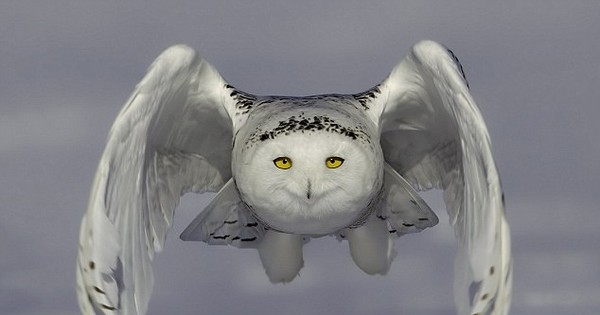There are some 160,000 unique moth species, and many have colorful characteristics that rival those of their close relative, the butterfly.

Moths range from small, camouflaged species to large specimens bigger than a human hand, with eye-popping displays to ward off predators. Here are 20 of the most beautiful moths from around the world.
Comet Moth

With a wingspan of nearly 8 inches, the comet moth (Argema mittrei) is one of the largest moths in the world.
It’s a member of the giant silk moths, a family of moths that produce silk while in caterpillar form to construct their cocoons. It has a thick, hairy body, feathery antennae, and distinctive eyespots to disarm predators.
Also known as the Madagascan moon moth, it’s only found in Madagascar. Due to habitat loss, it’s now endangered, though it is still bred in captivity.
Lime Hawk-Moth

The lime hawk-moth (Mimas tiliae) is a medium-sized species with a wingspan of about 3 inches. It’s found throughout Europe, Asia, and North Africa.
It has a band of green markings across its wings, which helps it hide in its woodland habitat. Males of the species are usually smaller than the females but have more colorful markings.
Twin-Spotted Sphinx Moth

The twin-spotted sphinx moth (Smerinthus jamaicensis) is in most regards a dull-looking species, with one notable exception: while its body and forewings are brown, it has red hindwings with prominent blue and black eyespots.
It can be found across North America, with a range that stretches from Florida to the Yukon. In its larval stage, it feeds primarily on fruit trees like crab apples and cherries.
Oleander Hawk-Moth

The oleander hawk-moth (Daphnis nerii) is a large example of a hawk-moth, with a wingspan of 3 inches. It’s best known for its flying ability, and when it hovers over flowers to feed on nectar, it’s easily mistaken for a hummingbird.
Also known as the army green moth, it has a complex camouflage pattern that ranges from green to white to purple. It’s found in Asia, Africa, and the Hawaiian Islands, where it was introduced to pollinate some endangered flowers.
Io Moth

The io moth (Automeris io) is a colorful species that can be found across much of Canada and the United States. It has large, dramatic eyespots with white speckles that almost appear to reflect light.
While the males are primarily yellow, female moths have red forewings and smaller antennae. In its caterpillar form, it is bright green and covered with venomous spines that release toxins when touched.
Garden Tiger Moth

The garden tiger moth (Arctia caja) prefers colder climates, and can be found in the upper latitudes across North America, Europe, and Asia.
Its zebralike wing pattern wards off predators, and for good reason—the fluids in its body are toxic to other animals. It also generates a clicking sound that’s been proven to disrupt bats’ echolocation abilities, which serves as another escape tactic.
Galium Sphinx Moth

The galium sphinx moth (Hyles gallii) is another impressive flier, with strong, striped wings that can span over 3 inches. Its range includes the Northern United States and Canada, and it can even survive as far north as the Arctic Circle.
It’s named after the Galium family of plants, which it feeds on as a caterpillar. Sphinx moths, also known as hawk-moths, are unusually active during the daytime, when they feed on the nectar of flowers.
Rosy Maple Moth

The rosy maple moth (Dryocampa rubicunda) is one of the smallest of the great silk moths, a family of moths with more than 2,300 member species. It’s distinguished by its bright coloration, with a stout yellow body, pink legs, and pink- and yellow-striped wings.
This fuzzy creature feeds on maple leaves in its caterpillar form; in fact, large groups of caterpillars can easily render a tree bare, though this does not harm the host tree.
Like other great silk moths, it only survives from a few days up to two weeks as an adult and lacks the mouth parts necessary to eat.
False Tiger Moth

The false tiger moth (Dysphania militaris) is one of the moth species most commonly mistaken for a butterfly, perhaps due to its bright coloration, which is reminiscent of some swallowtail butterflies.
Despite its bright colors, it shares the characteristics that separate moths from butterflies, including feathery antennae, a thicker abdomen, and larger scales on its wings. It is found in Southeast Asia, and has a wingspan of about 3.5 inches.
Cecropia Moth

The cecropia moth (Hyalophora cecropia) is North America’s largest moth, with a wingspan that can reach 7 inches. Like other giant silk moths, it can’t eat and survives as an adult moth for only two weeks.
The population is susceptible to pest issues—a parasitoid called the tachinid fly was introduced to combat exotic gypsy moths, but has been so effective that it is affecting native moth populations as well.
Madagascan Sunset Moth

Like the comet moth, the Madagascan sunset moth (Chrysiridia rhipheus) is a colorful specimen that is endemic to Madagascar. It is not, however, as large as the comet moth, with a wingspan of only 3 inches.
Its hindwings sport a multitude of hues as well as several distinctive tails. Collectors are so enamored by its beautiful appearance that it is now bred in captivity for the international butterfly trade.
Giant Leopard Moth
The giant leopard moth (Hypercompe scribonia) is found across North and Central America, from southern Canada to Panama.
It has a distinctive color pattern, with white wings with black spots, some of which are solid and others ringed. When its wings are spread, its colorful abdomen, with shiny blue and orange spots, becomes visible. It’s generally hard to spot, thanks to its nocturnal nature.
Rothschildia Aurota
Rothschildia aurota is another giant silk moth species, and one of the largest to be found in South America, with a wingspan of 6-7 inches. It is one of many similar species on the continent, which might explain the lack of a common name.
Thanks to its wingspan and coloration, it’s also a popular species with hobbyist breeders and is known for being easy to raise in captivity.
Emperor Moth
The emperor moth (Saturnia pavonia) is a large, brown species found across Europe. It’s the only member of the Saturniidae family—which includes most of the largest, most beautiful moths—that lives in the British Isles.
Its mostly brown appearance is set off by a black and orange eyespot on each of its four wings.
Males will fly during the day and are much more active than females, which prefer to lie low in the vegetation during daylight hours.
White-Lined Sphinx Moth
The white-lined sphinx moth (Hyles lineata) is another hawk-moth known for its flying prowess reminiscent of hummingbirds. Its most striking feature is the white lines referenced in its name, which cover both its wings and abdomen.
It’s found across most of North and Central America, where it feeds on a wide variety of plants and flowers.
In its caterpillar form, it’s known to gather in large groups that can defoliate trees and shrubs.
Luna Moth
The luna moth (Actias luna) is one of the largest moth species found in North America. While it’s not endangered, it can be hard to spot in the wild, due to its weeklong lifespan.
It’s distinguished by its white body and large, pale green wings with long tails. As a caterpillar, the luna moth is one of several species that will deter predators by producing a clicking sound and regurgitating a foul liquid.
Hercules moth
A female Hercules moth (Coscinocera hercules) earned the distinction as the world’s largest moth, with the largest recorded wing surface area of any insect and a wingspan of 11 inches. It’s native to northern Australia and New Guinea.
These giant specimens haven’t evolved by accident—studies show that large wings with long tails can help moths escape from bats by drawing attention away from more vital body parts and disrupting sonar.
Coffee Clearwing
The coffee clearwing (Cephonodes hylas), also known as the coffee bee hawk-moth or pellucid hawk-moth, is widely found across Africa, the Middle East, Asia, and Australia.
It’s unique for its transparent, black-lined wings, and its multicolored body, which ranges from yellow to brown to green. As a caterpillar, it feeds on gardenia and coffee plants, and features a horn on its rear end, a common characteristic of hawk-moth larvae.
Elephant Hawk-Moth
The elephant hawk-moth (Deilephila elpenor) is distributed across Europe and Asia, but is most commonly found in the United Kingdom. Unlike most pollinating moths, which feed during the day, it remains nocturnal and has developed excellent night vision. It can even detect a flower’s color with only moonlight as a guide.
It has evolved to have eyespots in both its caterpillar and adult forms. As a caterpillar, it will strike a defensive pose, widening its body and emphasizing the spots to deter predators.
Japanese Silk Moth
The Japanese silk moth (Antheraea yamamai) is known for producing rare and expensive tussar silk, but it’s an arresting species due to its appearance as well. It has large, fernlike antennae and tan-colored wings that can grow up to 6 inches wide.
It’s native to Japan, but after more than 1,000 years of cultivation for its silk, it has been imported across Asia and Europe, where the species escaped containment and now also lives in the wild.





